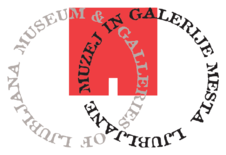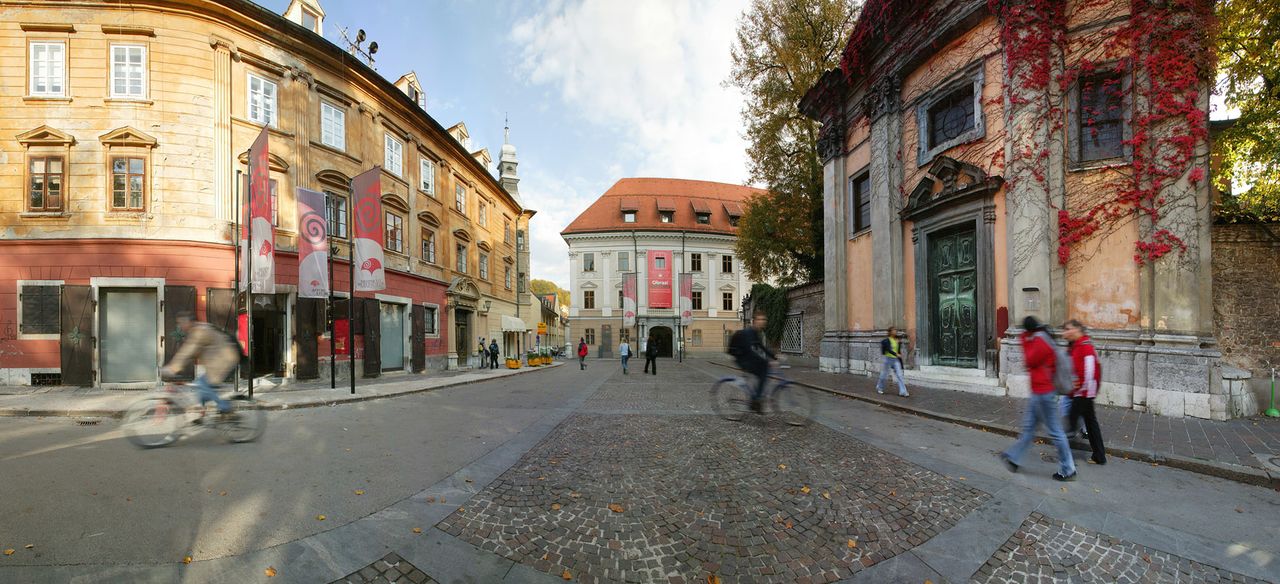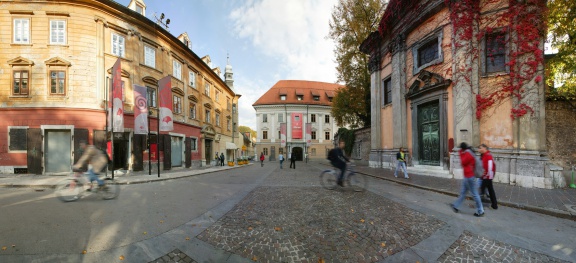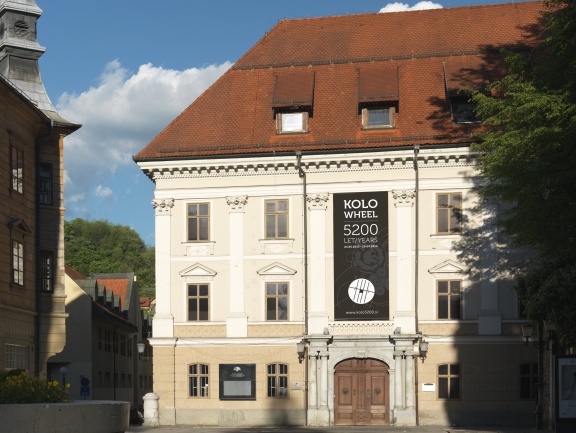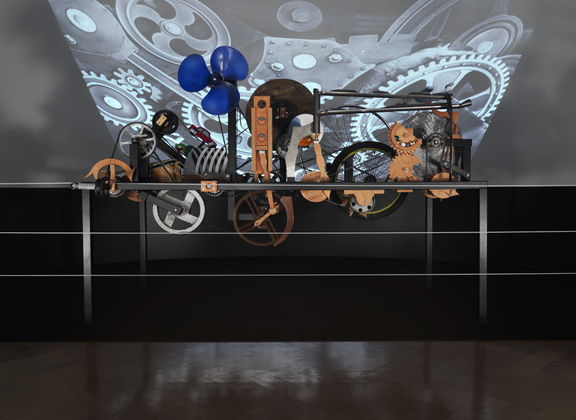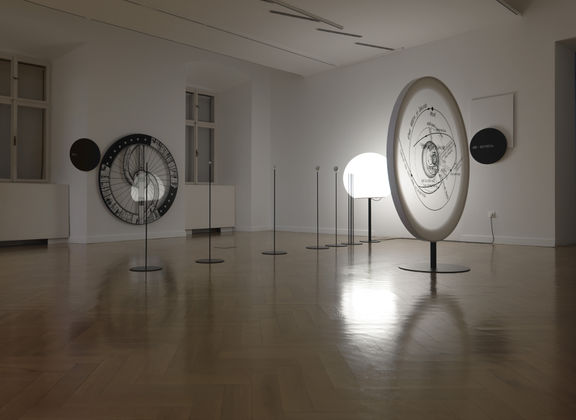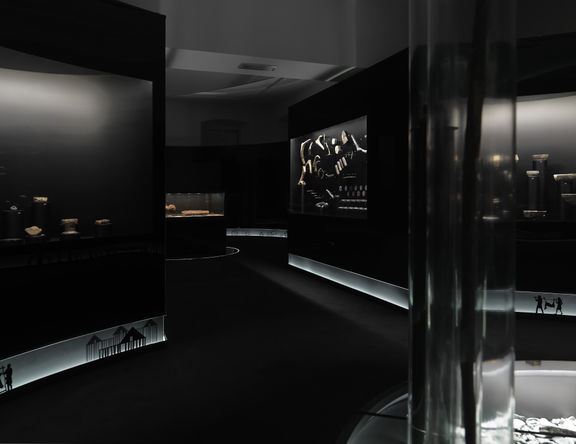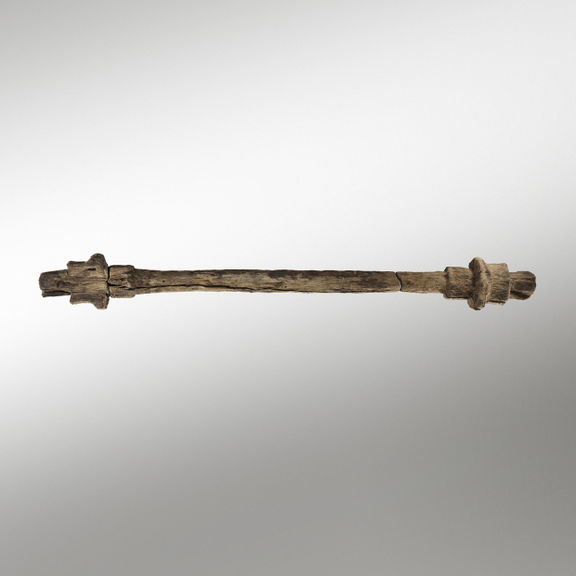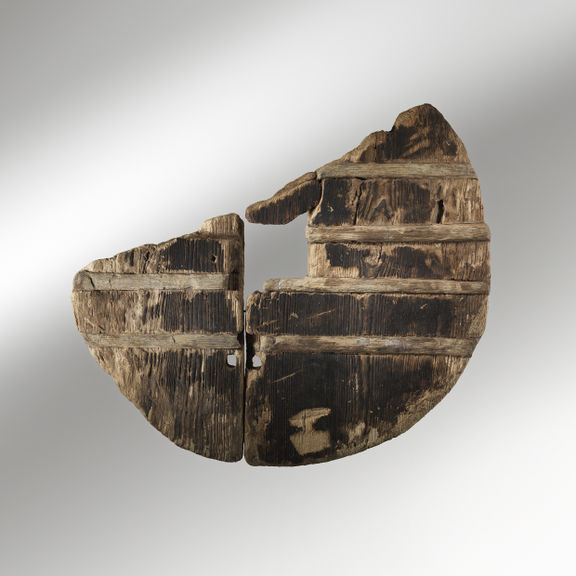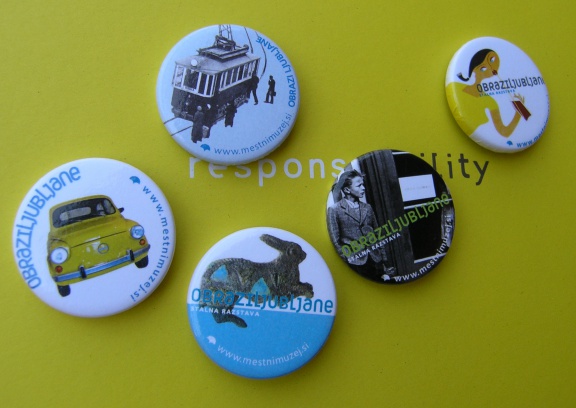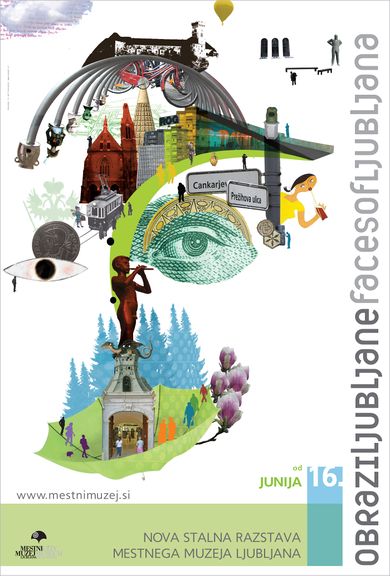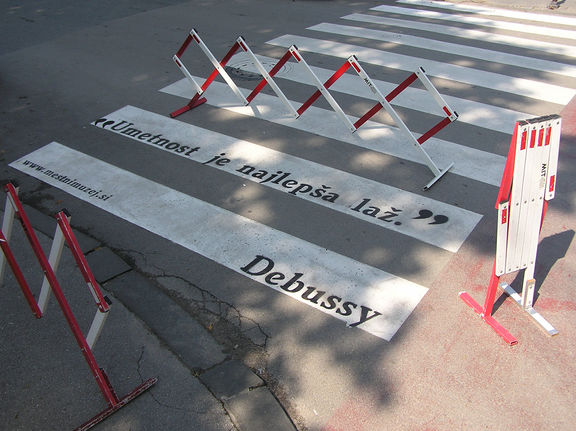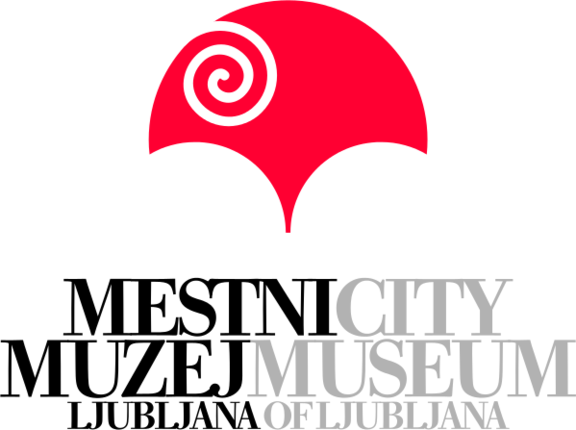Difference between revisions of "City Museum of Ljubljana"
(cat Museum institutions) |
(Kolo photo out) |
||
| Line 37: | Line 37: | ||
==Featured artefact== | ==Featured artefact== | ||
| − | |||
| − | |||
One of the museum's most interesting artefacts is the world's oldest wooden wheel with axle (3350 to 3100 BC). It was excavated from the remains of the pile dwelling settlement in the Ljubljana marshes (''Ljubljansko barje'') and has a radius of 70 centimetres. It is technologically advanced, made of two ashen panels of the same tree. The axle is 120 centimetres long and made of oak. Most probably the findings belonged to a single-axle cart. | One of the museum's most interesting artefacts is the world's oldest wooden wheel with axle (3350 to 3100 BC). It was excavated from the remains of the pile dwelling settlement in the Ljubljana marshes (''Ljubljansko barje'') and has a radius of 70 centimetres. It is technologically advanced, made of two ashen panels of the same tree. The axle is 120 centimetres long and made of oak. Most probably the findings belonged to a single-axle cart. | ||
Revision as of 11:32, 23 May 2013
The employees of the City Museum of Ljubljana aim to create a modern, open and visitor-friendly museum that serves as a cultural hot spot and a promoter of the city's identity. For those who like to explore the city on their own, an interesting museum offer is the GPS Guide to Emona that enables you to make your own guided tour through the remains of the Roman city according to your interest and time availability.
Objectives
The City Museum of Ljubljana has collected materials and documents, and invested in knowledge, exhibitions and events that represent Slovene capital and its inhabitants. Restoration and conservation experts of the museum form the Ščit - Conservatory Centre of the City Museum of Ljubljana whose duties are to survey and improve the condition of the museum items in its collections and exhibitions.
Featured artefact
One of the museum's most interesting artefacts is the world's oldest wooden wheel with axle (3350 to 3100 BC). It was excavated from the remains of the pile dwelling settlement in the Ljubljana marshes (Ljubljansko barje) and has a radius of 70 centimetres. It is technologically advanced, made of two ashen panels of the same tree. The axle is 120 centimetres long and made of oak. Most probably the findings belonged to a single-axle cart.
Exhibitions
On the site where the main museum building stands today, extensive archaeological excavations were carried out before and during the museum's recent renovation (1995–2003). Pre-historic graves from 1000–800 BC, remnants of Roman buildings, and one of the main roads which once connected the ancient city of Emona with other Roman cities were discovered. The fact that the road was maintained in the early middle ages also had a huge impact on the layout of the mediaeval city centre. A nearly 2000-year-old canal system was discovered which was in function until renovation.
The Auersperg Palace, which houses the museum, stands at the southwest part of the 14th-century Novi trg (New Square), next to the Monastery of the Order of Teutonic Knights at Križanke. Archaeological and construction research has shown building phases of the Auersperg Palace documented in 1547. Baron Herbart VII von Auersperg bought the building in 1575. These findings and the layers of history are included in the structure of the new museum building and can be seen through glass in underground exhibition spaces and in the coffee shop.
The museum's permanent exhibition The Faces of Ljubljana shows the historical development and evolution throughout Ljubljana's history; from prehistoric settlements, to the Roman town of Emona, to the medieval city with its three parts, to the modern urban capital of Slovenia. The exhibition can be roughly divided into three chapters; stories about Ljubljana the place, stories about the people, and stories about Ljubljana today with its local government, economy, and role as a scientific and cultural centre.
Temporary exhibitions in the City Museum of Ljubljana tend to be blockbuster attractions with famous names such as Pablo Picasso, Marc Chagall, Roberto Capucci, Rihard Jakopič. Temporary exhibitions on important historical events also take place, for instance: Primož Trubar, author of the first book in Slovenian (1550) or 200 years of the Napoleonic Illyrian Provinces. These exhibitions are prepared by the museum's staff with the collaboration of partners, collectors, artists, and curators.
Venues
Several of the museum's unique spaces can be rented for organising conferences, seminars, celebrations, business events, and protocol receptions. These spaces include a conference room with state-of-the-art audio-visual projection facilities, a workshop room, the foyer (mayor Hribar's room), and an atrium and courtyard. The museum has also museum store which sells publications and souvenirs and a picturesque coffee shop in the cellar elegantly positioned among the layers of archaeological excavations.
Branches
The City Museum of Ljubljana maintains also the archaeological sites of Roman Emona, the Tobacco Museum in the former Tobacco Factory on Tržaška Street, the Memorial Room of Writer Ivan Cankar on the Rožnik Hill, and the Oton Župančič Memorial Collection, situated in the Oton Župančič Library). An important unit is also the Ščit - Conservatory Centre of the City Museum of Ljubljana.
See also
- Museum and Galleries of Ljubljana
- Roman Emona
- Tobacco Museum
- Memorial Room of Writer Ivan Cankar
- Ščit - Conservatory Centre of the City Museum of Ljubljana
External links
Exhibitions and collections
- The Faces of Ljubljana exhibition in City Museum Ljubljana
- The world's oldest wheel - dendroarchaeological web page
- Article on the 200th anniversary of Napoleon's Illyrian Provinces project (pdf), Sinfo Magazine (pp. 6-9)
Museum's premises and location
- Renovation of the City Museum by Ofis Arhitekti
- Auersperg Palace description at Visit Ljubljana website



